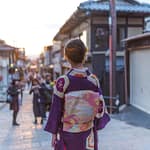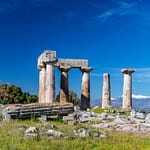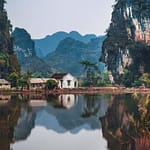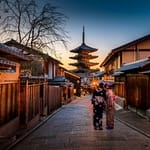Mount Rushmore stands as one of America’s most iconic landmarks — a must-see if you’re journeying through the scenic Black Hills of South Dakota.
This remarkable national memorial showcases the massive, stone-carved faces of four U.S. presidents, blending artistry with rich historical significance. It’s more than just a photo opportunity — it’s a tribute to the nation’s heritage.
To help you make the most of your first visit, here are 11 insightful tips to enhance your Mount Rushmore experience!
- Mount Rushmore: 11 Smart Visitor Tips
- Mornings Are Ideal for a Peaceful Experience
- Admission vs. Parking: What You Should Know
- A Reverent Unveiling of Night’s Luminous Splendor
- A bold and brilliant engineering accomplishment
- There’s a Truly Interesting Story Behind It
- Access is granted to every soul who seeks
- Designed for easy visits, remembered for a lifetime.
- Rangers are here to share the hidden stories
- Take the trail for a deeper look at Mount Rushmore
- History to explore. Mementos to remember
- Plenty more adventures await just beyond the monument
Mornings Are Ideal for a Peaceful Experience
The optimal time to visit Mount Rushmore is early in the morning. Not only is it cooler during the summer months, but the crowds are minimal and the lighting is ideal for photography. The soft morning light highlights the details of the monument beautifully, making it the perfect time to capture clear, unobstructed photos.
By contrast, midday light tends to flatten the features, and during sunset, the faces fall into shadow — not ideal for photos. We arrived around 8:00 AM, which allowed us to enjoy a peaceful walk around the grounds, take photos without anyone in the background, and really soak in the atmosphere. By 10:00 AM, the site was noticeably busier, with larger crowds beginning to gather.
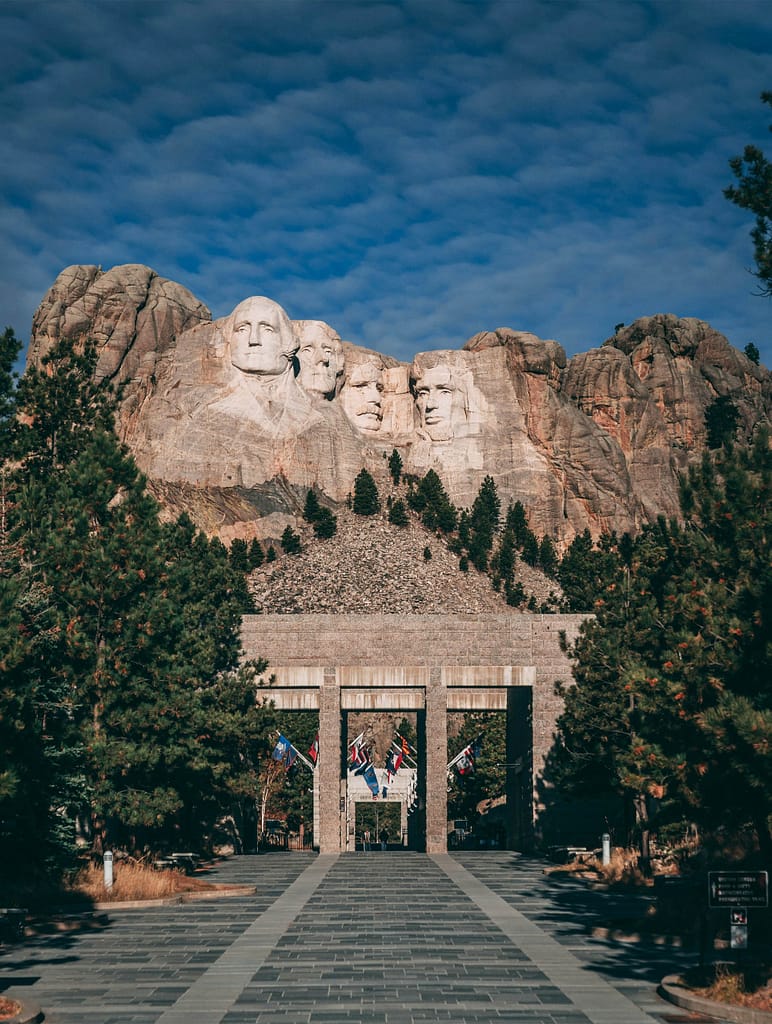
Grand Entryway Through the Avenue of Flags
Admission vs. Parking: What You Should Know
Although Mount Rushmore is managed by the U.S. National Park Service, its fee structure differs from most other national parks and monuments. There’s no official entrance fee to access the memorial itself — however, there is a mandatory parking fee.
This parking fee is not included with annual or lifetime U.S. park passes, which can be surprising to some visitors. The fee is charged per vehicle, not per person, and is required to access the on-site parking structure.
You can pay the parking fee conveniently at the entrance using either cash or a credit card. For the most up-to-date rates, it’s a good idea to check the National Park Service website in advance. Despite the extra cost, it’s a small price for the experience and views Mount Rushmore offers.
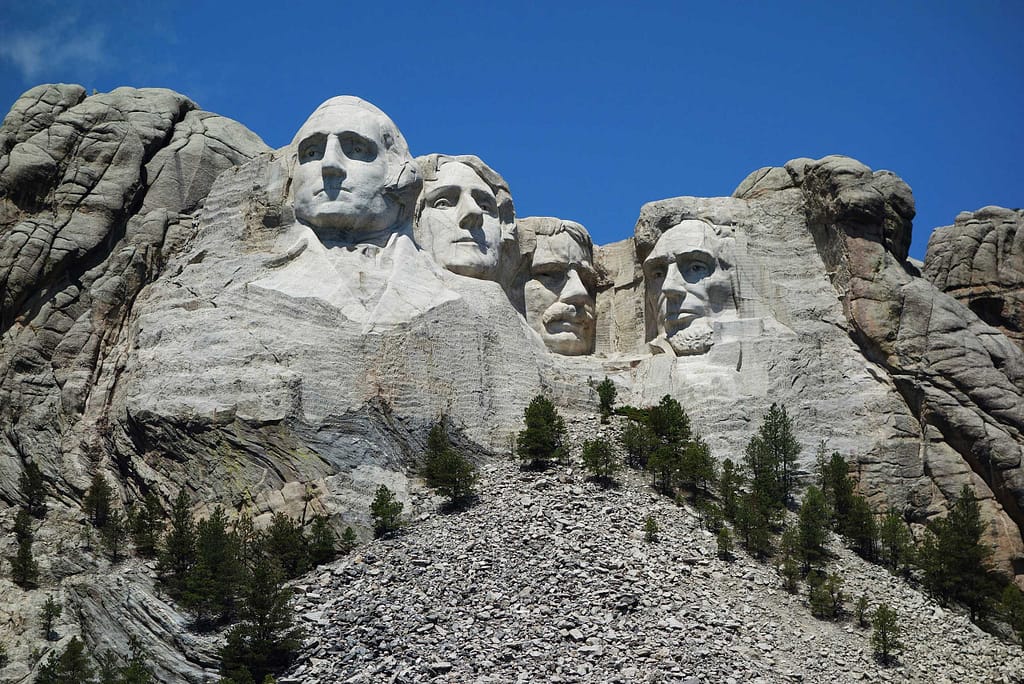
Mount Rushmore Presidential Memorial
A Reverent Unveiling of Night’s Luminous Splendor
Each evening, the iconic faces of Mount Rushmore are illuminated, offering a stunning nighttime perspective that reveals the monument’s grandeur in an entirely different way.
During the summer season, this nightly tradition becomes even more meaningful with a special Lighting Ceremony. This experience includes an insightful talk by a National Park Service ranger, sharing the stories of the presidents carved into stone and the enduring legacy of American history.
Seasonal hours for the ceremony and illumination can be found on the official National Park Service website [here].
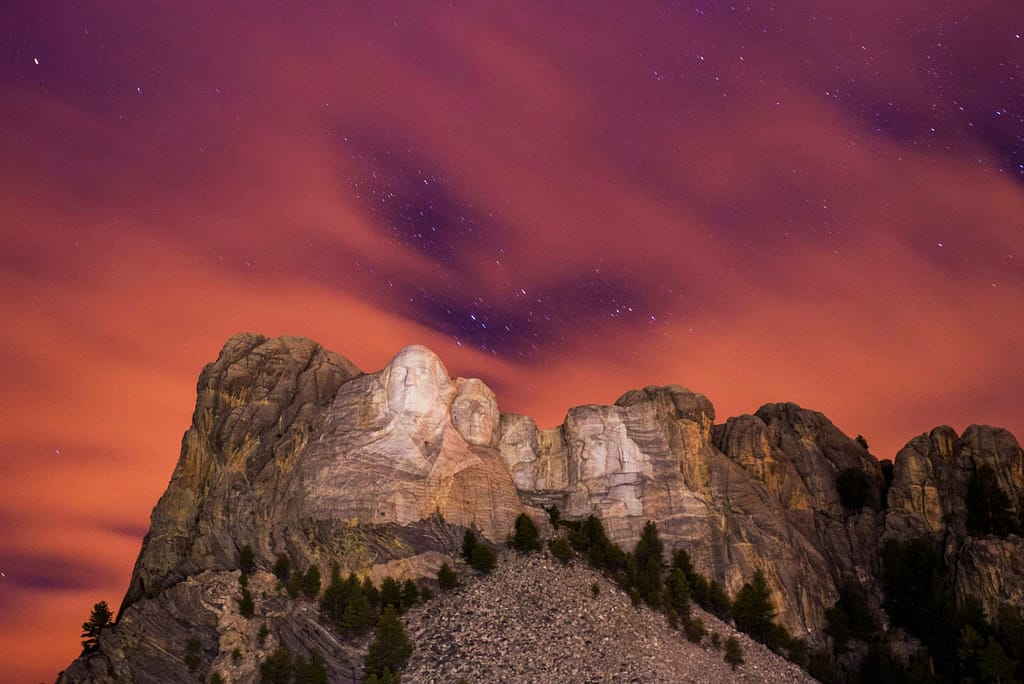
Ceremony of Lights Beneath the Stars
Note: Your Mount Rushmore parking pass is valid for a full year from the date of purchase. Be sure to keep it in a safe place—it’s your key to return visits without repaying the fee. Perfect for those planning to come back and take in the monument across seasons.
A bold and brilliant engineering accomplishment
The sculpture at Mount Rushmore stands as a breathtaking testament to engineering brilliance and artistic vision. Towering high above the Black Hills, each presidential face rises to the height of a six-story building. The noses alone stretch an astonishing 20 feet, while the eyes span nearly 10 feet wide—each detail carved with precision into enduring granite.
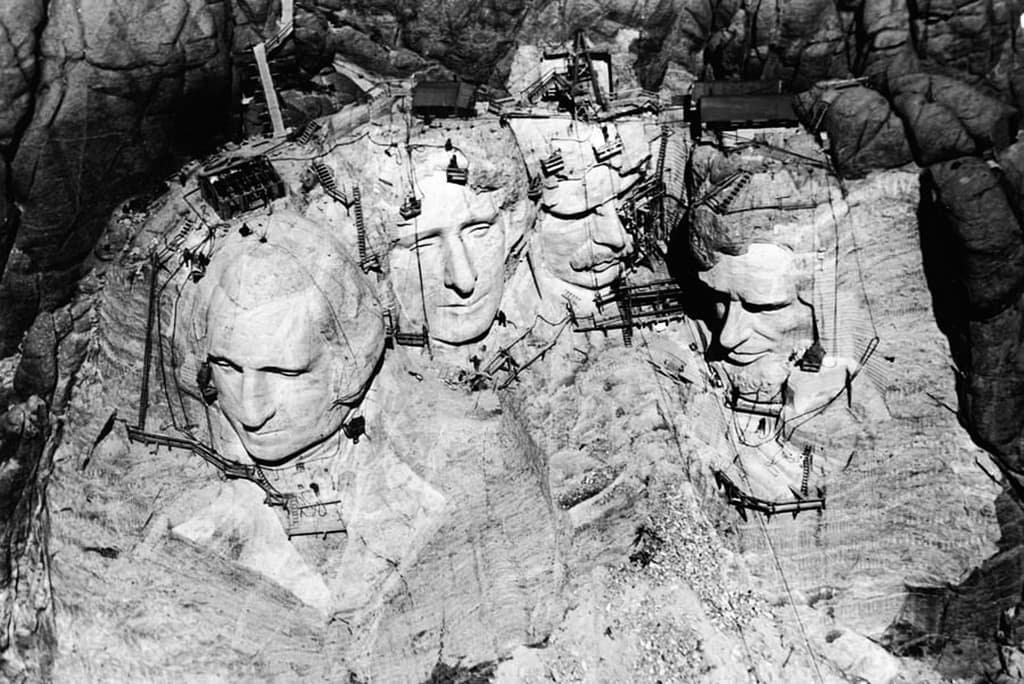
A Rare Aerial Glimpse into the Creation of Mount Rushmore (© NPS / Public Domain)
This colossal undertaking began in 1927 and spanned 14 years, concluding in 1941. Nearly 400 skilled workers labored on the project, relying heavily on dynamite for nearly 90% of the carving. Despite the hazardous conditions and sheer scale of the effort, the team achieved the remarkable feat without a single loss of life—an extraordinary testament to their discipline, coordination, and resilience.
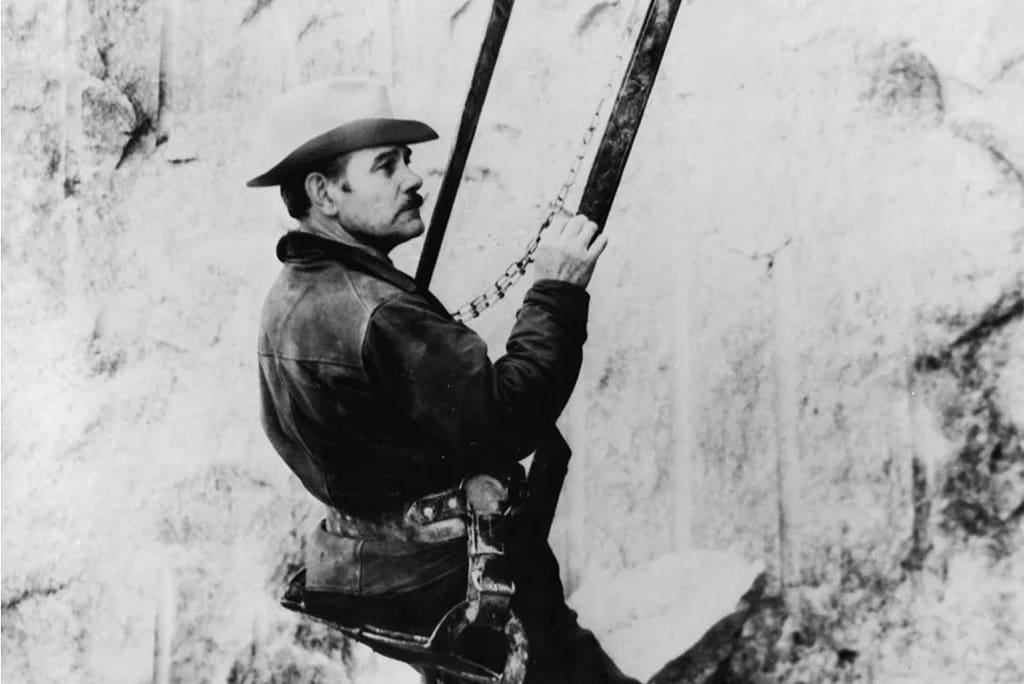
Gutzon Borglum, Visionary Sculptor Behind Mount Rushmore (© NPS / Public Domain)
There’s a Truly Interesting Story Behind It
Mount Rushmore was the vision of sculptor Gutzon Borglum, who sought to honor four defining figures in American history—Presidents George Washington, Thomas Jefferson, Abraham Lincoln, and Theodore Roosevelt. Each was chosen not just for their leadership, but for what they represent in the shaping of the United States.
Washington stands as the symbol of the nation’s birth and foundation. Jefferson embodies the spirit of expansion, credited with the Louisiana Purchase that doubled the size of the young country. Lincoln represents the preservation of the Union through the crucible of the Civil War. And Roosevelt reflects the emergence of the U.S. as a global power, leading the nation into the modern era.
Borglum originally envisioned sculpting the presidents from head to waist, but after his death in 1941, the project was concluded with only the heads completed—yet the monument remains no less powerful in its message.
If you’re curious to dive deeper into the creation of this national landmark, Smithsonian Magazine offers a fascinating article on its history—well worth the read before your visit.
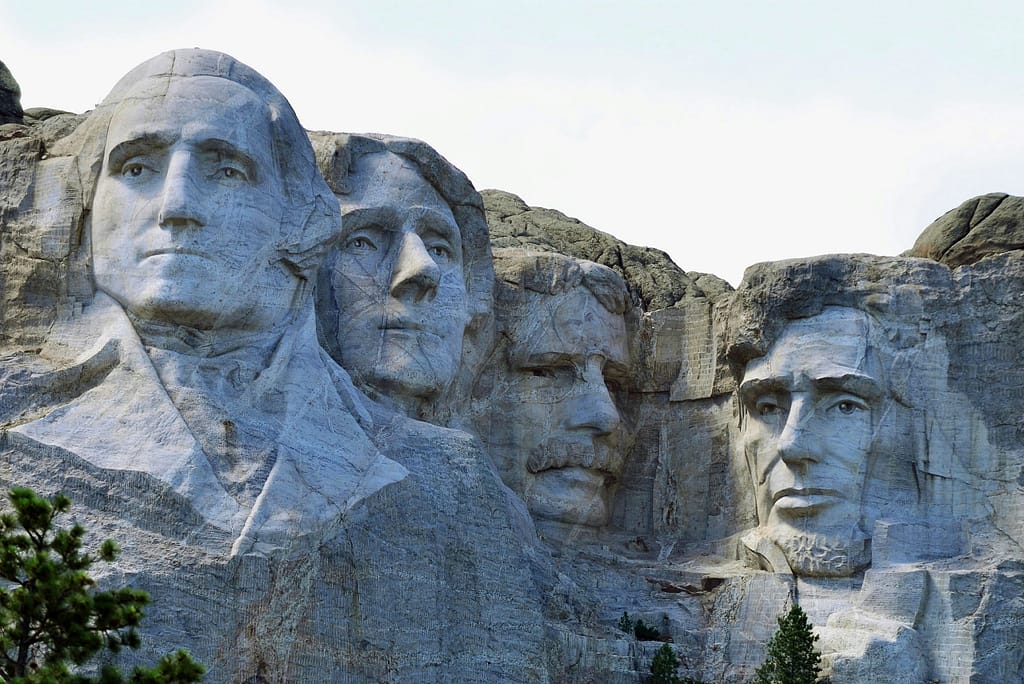
The Four Pillars of American Leadership: Washington, Jefferson, Roosevelt, and Lincoln
I want to create a monument so inspiring that people from all over America will be drawn to come and look and go home better citizens.
” Gutzon Borglum, sculptor of Mount Rushmore —————————
Access is granted to every soul who seeks
Mount Rushmore is just a scenic 30-minute drive from Rapid City, South Dakota—a regional hub with ample hotel accommodations and its own airport, making arrival smooth and convenient.
While public transportation doesn’t reach the monument directly, the vast majority of visitors opt to drive, and with generous parking available on-site, it’s an easy and flexible option.
Prefer to leave the planning to someone else? Several local companies offer guided tours, providing not only transportation and navigation but also rich historical context from knowledgeable guides—so you can focus on the experience, not the logistics.
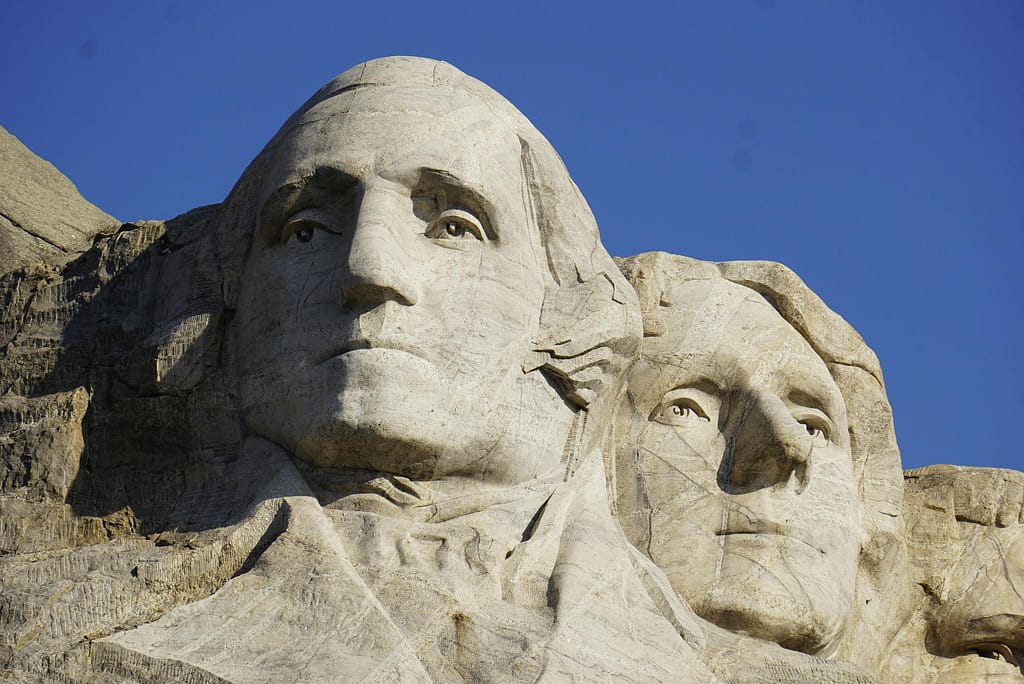
Face of George Washington
Designed for easy visits, remembered for a lifetime.
Pressed for time? A visit to Mount Rushmore can be both quick and meaningful—some guests experience the highlights in as little as 30 minutes.
Begin your visit by strolling through the Avenue of the Flags, where 56 flags proudly represent all 50 U.S. states, the District of Columbia, three U.S. territories (Guam, American Samoa, and the U.S. Virgin Islands), and two commonwealths (Puerto Rico and the Northern Mariana Islands).
From there, head to the Grand View Terrace for the iconic panorama of the presidents’ carved faces—perfect for photos and reflection. Even a short stop offers a powerful glimpse into America’s story.
Have a little more time—say, an hour or two? Add depth to your visit by exploring the Presidential Trail, a scenic loop that brings you closer to the monument, and then stop by the Lincoln Borglum Visitor Center to discover the history, artistry, and ambition behind this monumental achievement.
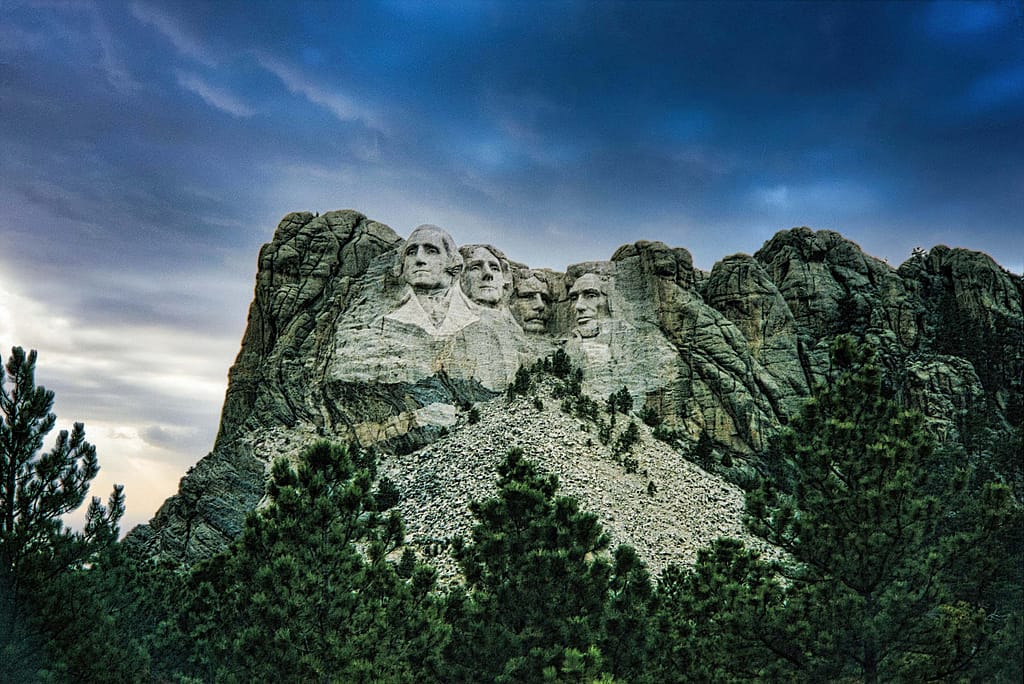
Seeing Mount Rushmore in person was a blast—truly a moment where history meets awe.
Rangers are here to share the hidden stories
Ranger-led programs are offered throughout the day at the memorial—no reservation required. Just show up and take part.
These enriching experiences include informative ranger talks that explore the history, meaning, and craftsmanship behind the monument, as well as cultural presentations like the traditional Lakota hoop dance performed on the main terrace.
Additional activities vary by season and day, offering visitors of all ages a chance to connect more deeply with the stories Mount Rushmore represents.
To plan your visit and check the latest schedule of programs and performances, visit the National Park Service website.
Take the trail for a deeper look at Mount Rushmore
Yes, that’s right—Mount Rushmore features a short, scenic hike called the Presidential Trail, offering a closer look at the monument from below.
This ½-mile loop begins and ends at the main viewing terrace, making it easy to incorporate into any visit. Most people complete the trail in 20 to 40 minutes, depending on pace and how often they stop to take in the views.
If you walk the trail clockwise, the first 0.2 miles are flat, paved, and fully accessible—ideal for all visitors. The final 0.4 miles includes 422 steps, adding a bit of a challenge, but it’s manageable and well worth the effort for the up-close perspectives of the mountain and surrounding landscape.
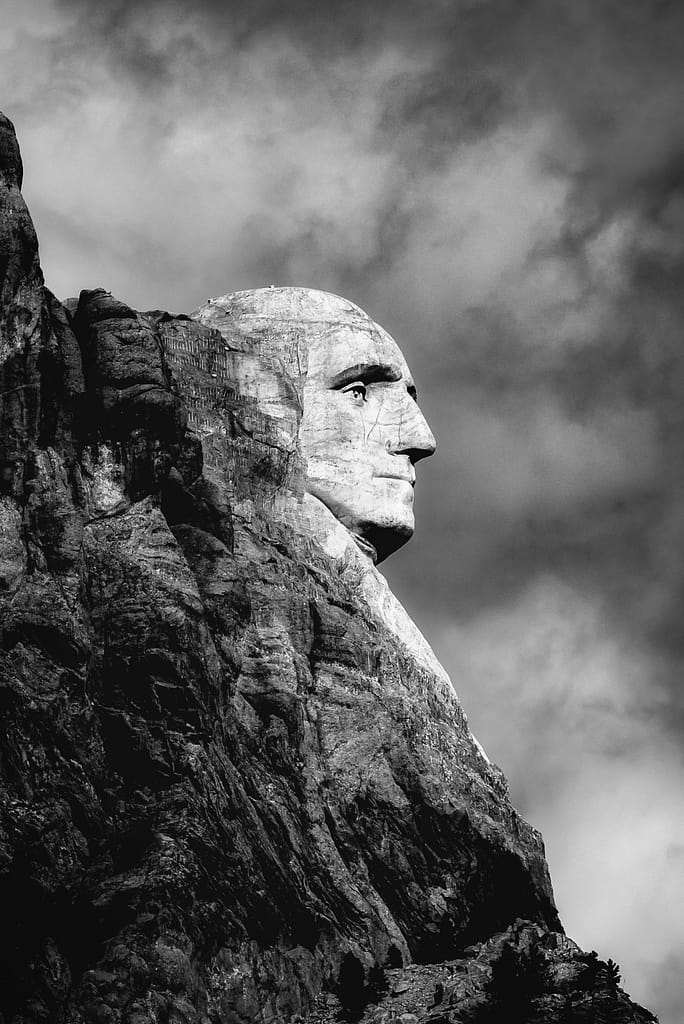
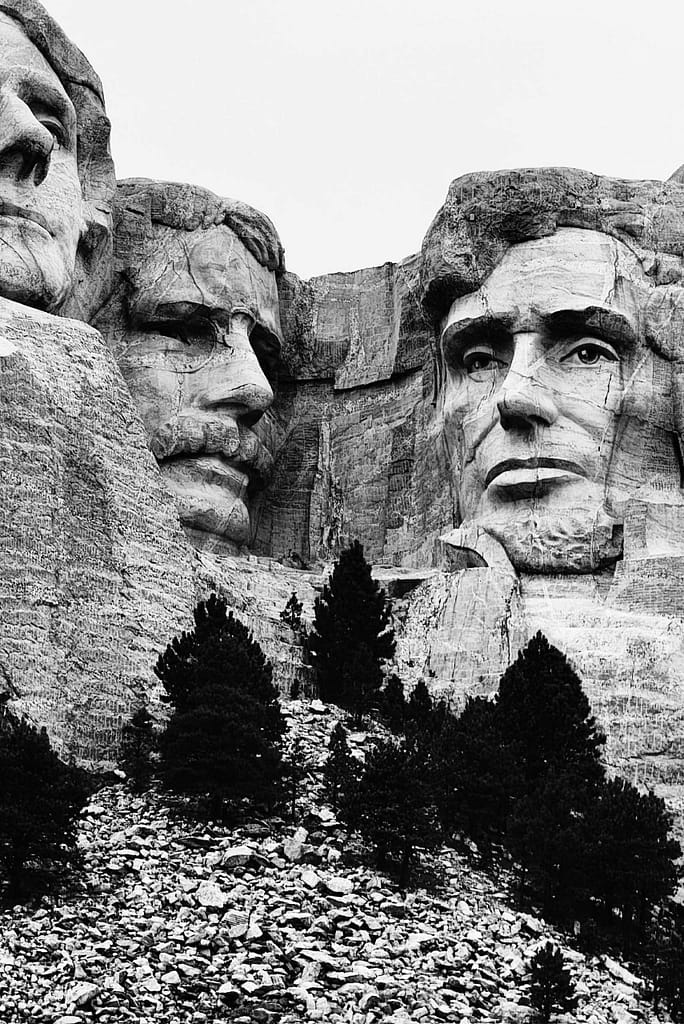

Presidential Trail Vistas
Along the Presidential Trail, you’ll discover two remarkable viewpoints that often remain peaceful and uncrowded—perfect for reflection and photography.
One is the Borglum View Terrace, the very spot where sculptor Gutzon Borglum stood as he envisioned what would become Mount Rushmore National Memorial. The other, the Historic View Terrace, offers one of the earliest perspectives from which visitors first admired the monument—steeped in the history of the memorial itself.
Another highlight along the trail is the Sculptor’s Studio—a modest yet fascinating museum space where you can explore the tools, models, and stories behind the creation of the monument. It’s a quiet place to connect with the artistry, ambition, and legacy behind the stone.
History to explore. Mementos to remember
The Visitor Center at Mount Rushmore features a small but informative museum that brings the story of the monument to life.
Inside, you’ll find a short educational film playing on rotation, along with exhibits that explore the vision, engineering, and legacy behind the carving of the mountain. It’s a great place to deepen your appreciation before or after seeing the monument itself.
Just steps away, near the entrance, is a well-stocked gift shop offering a wide variety of Mount Rushmore-themed souvenirs—from t-shirts and hats to coffee mugs, magnets, and thoughtful keepsakes to remember your visit.
Plenty more adventures await just beyond the monument
Bali, like much of Indonesia, is home to several species of venomous snakes. While these creatures are often elusive and prefer to avoid human contact, it’s important for anyone visiting or exploring the island to understand the risks associated with encountering them, particularly when venturing into more remote or jungle areas.
Among the venomous species found in Bali, one of the most well-known is the Island Pit Viper (Trimeresurus insularis), a highly venomous snake native to the region. This snake is often found in forests, especially in areas with dense vegetation. It is typically green or brown with a distinctive triangular head and is known for its swift strikes when threatened. Its venom can cause severe tissue damage and even death if not treated promptly, though bites are rare due to the viper’s reclusive nature.
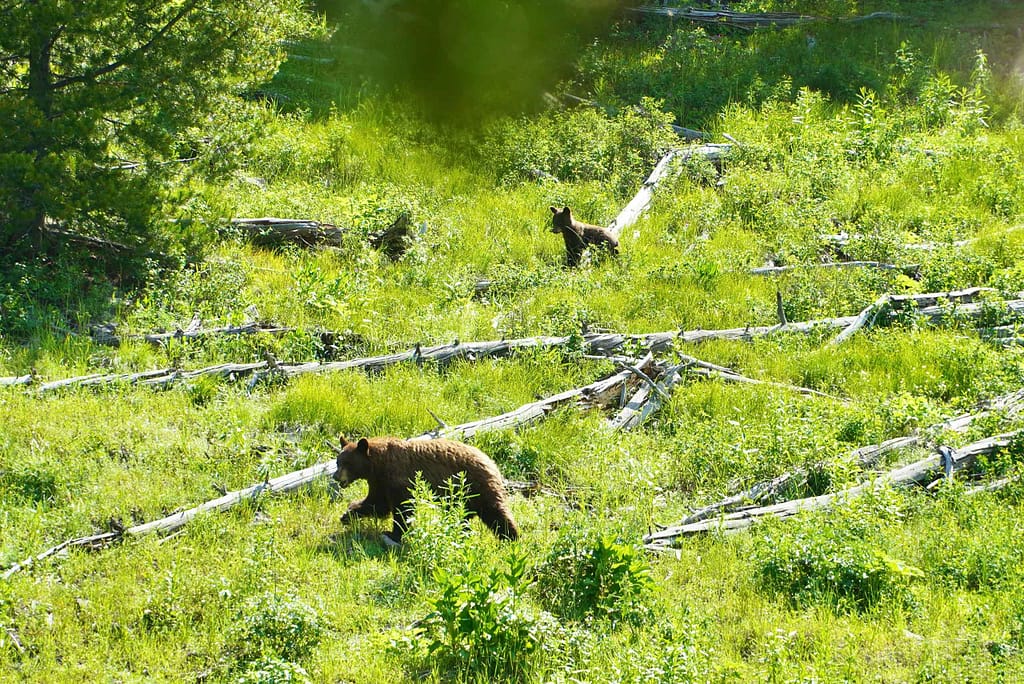
Female bear with cubs foraging of food at Yellowstone National Park
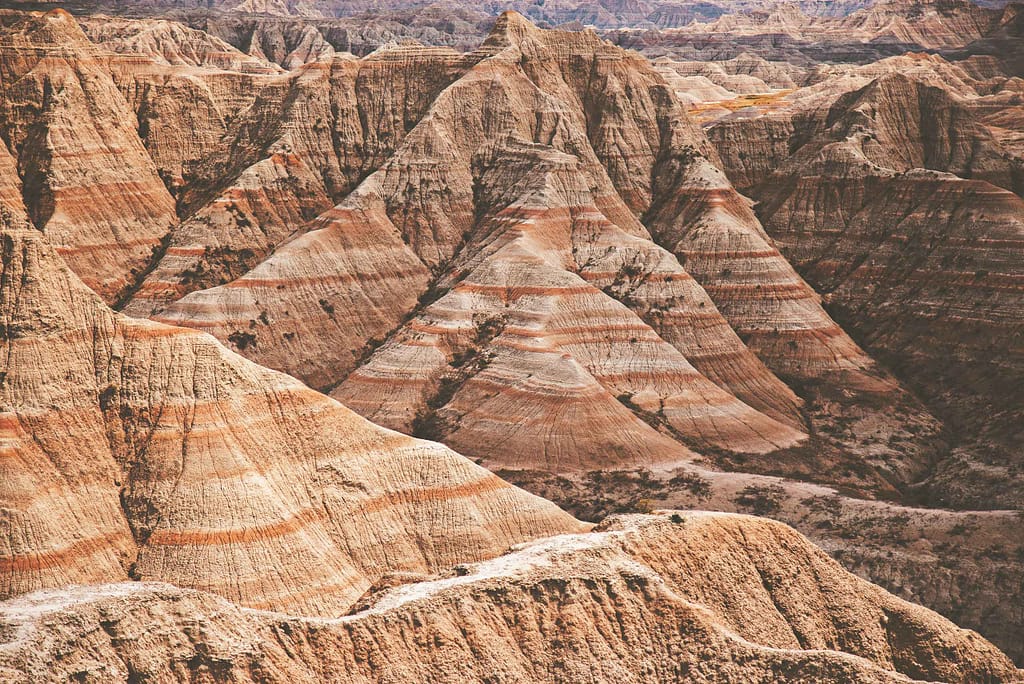
Badlands National Park
- Mount Rushmore: 11 Smart Visitor Tips
- Mornings Are Ideal for a Peaceful Experience
- Admission vs. Parking: What You Should Know
- A Reverent Unveiling of Night’s Luminous Splendor
- A bold and brilliant engineering accomplishment
- There’s a Truly Interesting Story Behind It
- Access is granted to every soul who seeks
- Designed for easy visits, remembered for a lifetime.
- Rangers are here to share the hidden stories
- Take the trail for a deeper look at Mount Rushmore
- History to explore. Mementos to remember
- Plenty more adventures await just beyond the monument

